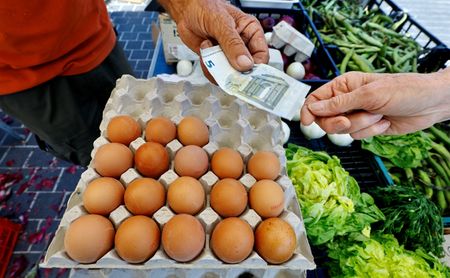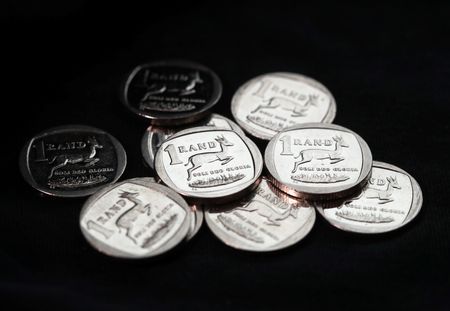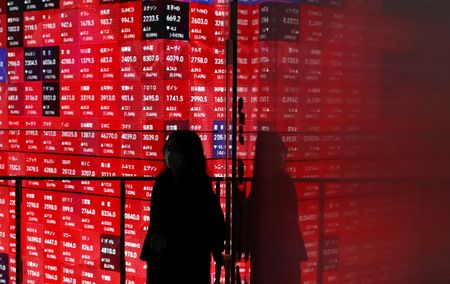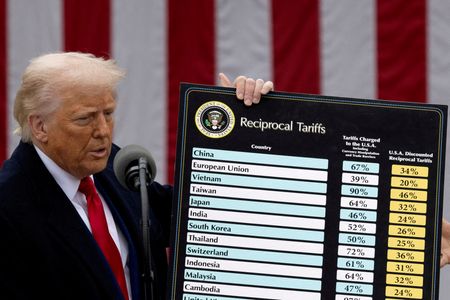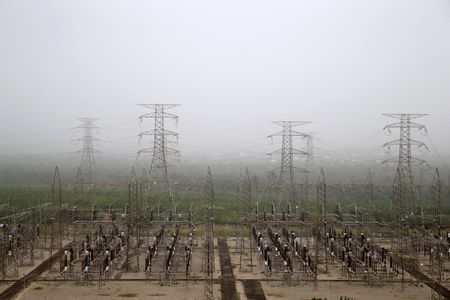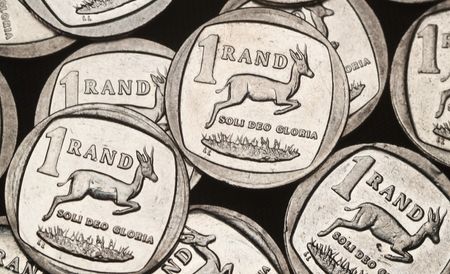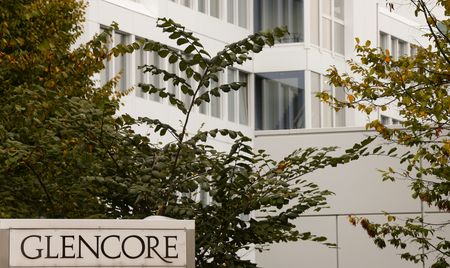By Stefano Rebaudo and Rocky Swift
(Reuters) -The euro hit a fresh 1-1/2-week high against a weakening dollar on Thursday as investors monitored Ukraine peace talks and shifted their focus to the Bank of England’s policy meeting later in the session.
The U.S. dollar remained under pressure amid growing concerns over partisanship creeping into key U.S. institutions.
Initial U.S. jobless claims, due later in the session, will be closely watched following last week’s disappointing nonfarm payrolls report, which triggered a dovish repricing of the Federal Reserve easing path and a slide in the greenback.
The euro rose 0.14% to $1.1677, its highest level since July 28, with a possible peace deal in Ukraine seen as a positive driver for the single currency.
Ukrainian President Volodymyr Zelenskiy said he planned contacts with Germany, France and Italy on Thursday to discuss progress toward peace.
“Sectors to benefit (from a peace deal) should be European consumers, growth-sensitive and construction-related sectors,” said Mohit Kumar, economist at Jefferies.
“It should also be positive for Eastern Europe as most of the reconstruction efforts would likely flow through Eastern European economies.”
Sterling was steady ahead of a BoE policy announcement, with markets widely expecting another rate cut.
Markets will watch the expected three-way voting split for any signal that the central bank might change its guidance on a “gradual and careful” easing path.
“We suspect conviction levels are low in the supposed consensus view that rates can only go down and pressure affected currencies,” said Geoff Yu, strategist at BNY, after warning that markets may be too complacent about stagflation risks.
“The Bank of England will kick off what we expect to be a new run of cuts through August and September in Europe, but over-committing to easing risks policy error and prolonging stagflation,” he added.
The Swiss franc rose 0.20% to 0.8047 versus the dollar, even as Swiss President Karin Keller-Sutter returned from Washington empty-handed after a trip aimed at averting a crippling 39% tariff on the country’s exports to the U.S.
“While we still believe that a deal will ultimately be reached, it is likely to be far more expensive than Switzerland had hoped,” said Michael Pfister, strategist at Commerzbank.
Last week, U.S. President Donald Trump fired the official responsible for the labour data he did not like, and focus is centring on his nomination to fill a coming vacancy on the Fed’s Board of Governors and candidates for the next chair of the central bank.
The dollar index, which measures the greenback against a basket of major peers, dropped to a fresh 1-1/2-week low at 98.00, down 0.20% on the day.
Fed funds futures are now pricing in a 94% probability of a 25 basis point cut at the Fed’s September meeting, up from 48% a week ago, according to the CME Group’s FedWatch Tool. In total, traders see 60.5 basis points in cuts this year.
The president said on Tuesday he would decide on a nominee to replace outgoing Fed Governor Adriana Kugler by the end of the week and had separately narrowed the possible replacements for Fed Chair Jerome Powell to a short list of four.
China’s yuan firmed slightly, supported by a stronger official midpoint and upbeat Chinese trade data.
(Reporting by Stefano Rebaudo and Rocky Swift; Editing by Jacqueline Wong and Toby Chopra)

